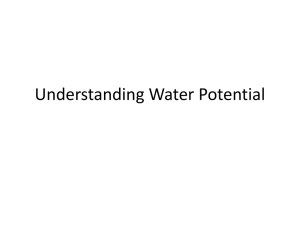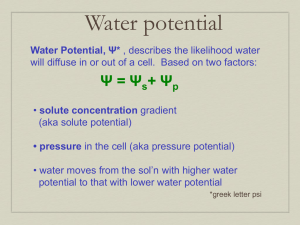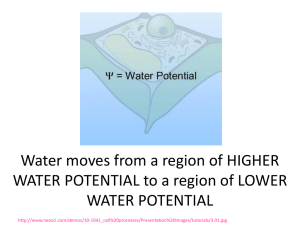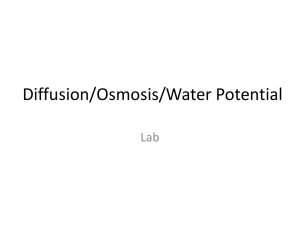Water Potential
advertisement
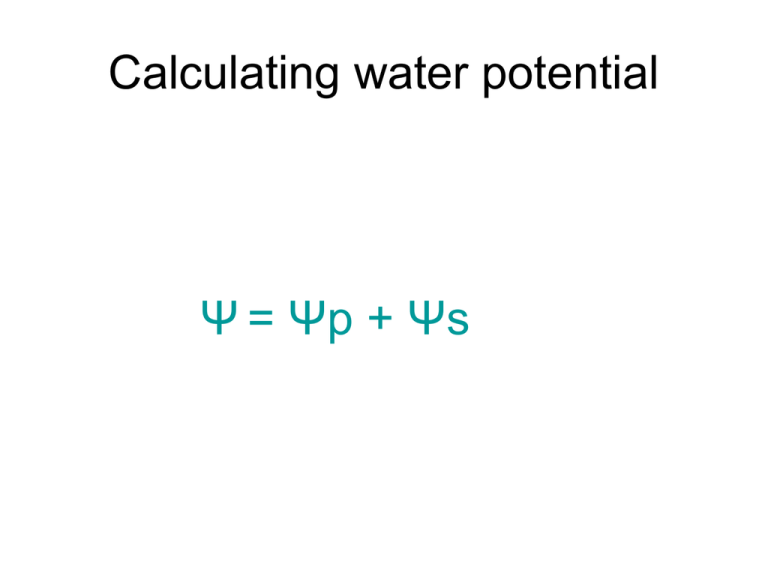
Calculating water potential Ψ = Ψp + Ψs The combined effects of these two factors: 1. Solute concentration 2. Pressure are incorporated into a single measurement called Water Potential or Ψ Water will move across a membrance from the solution with higher water potential to the solution with the lower water potential. Water Potential – Water potential is determined by solute potential and pressure potential. Ψ = Ψp + Ψs – Water moves from regions of high water potential to regions of low water potential. Ψs Solute (osmotic) potential Once you know the solute concentration, you can calculate solute potential using the following formula: • Solute potential (ΨS ) = –iCRT Ψs Solute (osmotic) potential • Pure water has a solute potential (Ψs) of zero. Solute potential can never be positive. • Adding more solute is a negative experience; the solute potential becomes negative. Ψs = − iCRT Solute potential • i = The ionization constant – for NaCl this would be 2; – for sucrose or glucose, this number is 1 • C = Molar concentration (from your experimental data) – Iso-osmolar molarity: would allow you to place a potato in the solution and get no movement of water. – Point at which the line crosses 0 on the graph. • R = Pressure constant = 0.0831 liter bar/mole K • T = Temperature in degrees Kelvin = 273 + °C of solution Pressure Potential – the sum of all pressure on water. In units of pressure: MPa or Bars • Turgor pressure – forced caused by cell membrane pushing against cell wall. • Wall pressure – an equal and opposite force exerted by cell wall. Counteracts the movement of water due to osmosis. • Other pressures – tension, cohesion, atmospheric, root, etc. Calculating Water Potential • Water potential is calculated using the following formula: • Ψ = ΨP + ΨS • Pressure potential (ΨP ): In a plant cell, pressure exerted by the rigid cell wall that limits further water uptake. • Solute potential (ΨS ): The effect of solute concentration. – Pure water at atmospheric pressure has a solute potential of zero. Water potential Chapter 32 Practice Problem • The molar concentration of a sugar solution in an open beaker has been determined to be 0.3M. Calculate the solute potential at 27 degrees. Round your answer to the nearest hundredth. • The pressure potential of a solution open to the air is zero. Since you know the solute potential of the solution, you can now calculate the water potential. • What is the water potential for this example? Round your answer to the nearest hundredth.

